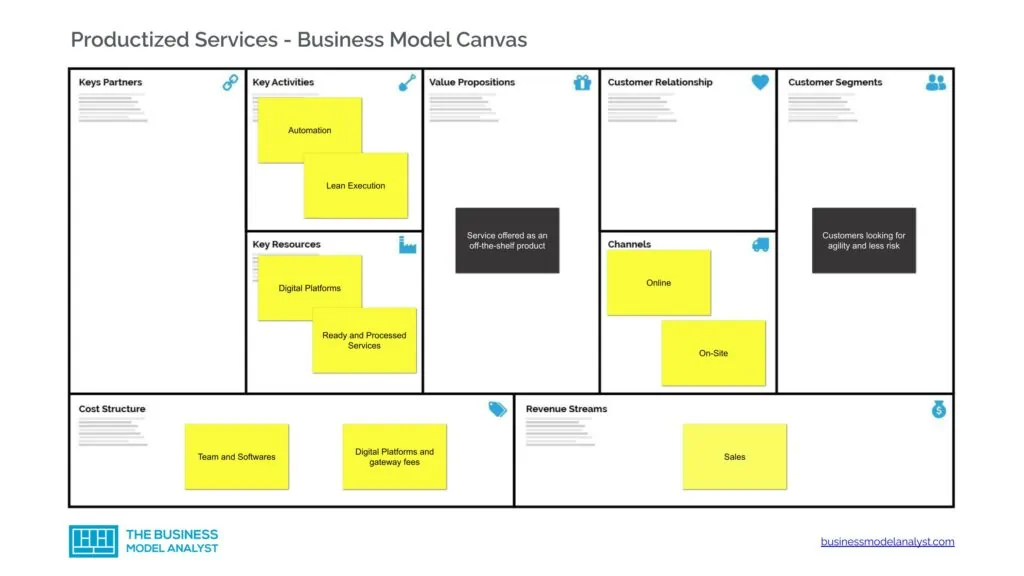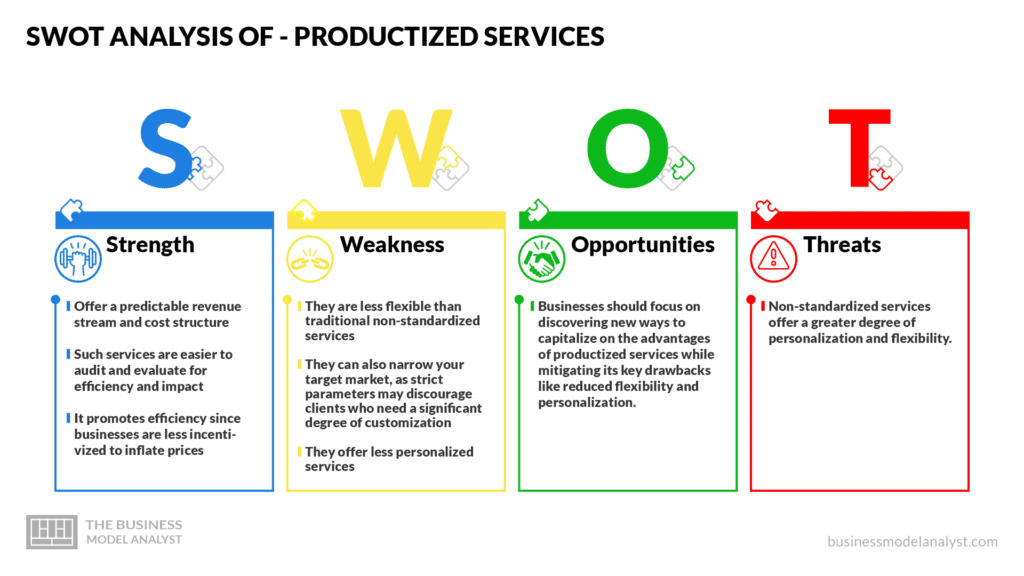It is obvious to even the most casual observer that the service industry has seen significant growth in the last few decades. With this growth comes a wide range of innovations in various sectors, which have largely been responsible for the rapid development of the industry. One of these innovations is productized services. In this article, we’ll explore how the productized services business model works, its strengths and weaknesses, as well as the opportunities available to this form of business.
Contents
A Brief History of Productized Services
The service sector (also called the tertiary industry) is considered the most developed stage of the current three-sector economic cycle model and involves the provision of “intangible goods”. It is also considered to be the most valuable stage (ahead of the primary and secondary sectors), with the global service industry expected to have reached nearly 12 trillion USD in 2021 and accounting for about 65.7% of the global GDP in 2020.
One of the newer developments within the tertiary industry is the creation of productized services. A productized service simply refers to services that are sold as packages with clearly defined parameters, terms, and prices. Therefore, customers who purchase these services are fully aware of what to expect beforehand. It is hard to say exactly when this model was created, but it has become prevalent among many members of the service sector, including both freelancers and larger service agencies.
Why Productized Services Gained Popularity
During the rapid rise of the service sector, one of its greatest strengths also turned out to be a significant hindrance. The flexibility of many services offered a previously impossible degree of scalability and versatility, but it also created certain issues, such as consumers not being able to accurately estimate the costs and expected results of certain services.
Productized services were seen as a solution to this issue by offering consumers much-needed transparency and predictability, as well as offering businesses a much more reliable business model in terms of costs and revenue.
Some examples of such services include WordPress (through their WP Speed Fix service), KENJI ROI (which specializes in Amazon listing optimization), and 50 Pound Social (a social media content creation platform).
How Productized Services Make Money
Just like any normal product within the service industry, productized services generate revenue by offering “intangible goods”, which may include actions, access to certain resources, or other types of benefits. The key difference is that these services come in pre-packaged forms which already have well-outlined prices and parameters.
Productized Services Business Model Canvas
Let’s examine the productized services business model canvas.

Productized Services customer segments
Productized Services customer segments consist of:
- Anyone who needs certain services, but prefers standardized packages with fixed terms and prices.
Productized Services Value Proposition
Here are some of the advantages offered by productized services over other forms of services.
Productized Services value propositions consist of:
- They offer a higher degree of standardization. Because the terms of these products are already well-defined, customers can confidently make use of these services and know what to expect. For instance, a customer can pay an advertising service a fixed amount of money for a fixed amount of ad space;
- It brought down the risks associated with non-standardized services. Some of these risks included services costing more (or less) than originally intended or failing to meet the requirements of the customer;
- Productized services require less supervision. Because these services already have well-defined terms which allow the buyer to accurately predict the outcome, there is less need for close supervision, thereby affording them more autonomy;
- They offer a more reliable source of income. Businesses within the service sector that adopt the use of productized services enjoy more predictable revenue streams.
Productized Services Channels
Productized Services channels consist of:
- Productized services can operate through virtually any channel, however, the use of social media, mobile apps, internet services, and e-commerce platforms are becoming some of their most popular ways of interacting with consumers.
Productized Services Customer Relationships
Productized Services customer relationships consist of:
- These companies can interact with their customers through a diverse range of customer relationships.
Productized Services Revenue Streams
Productized Services revenue streams consist of:
- They generate revenue primarily by selling their standardized services to interested buyers.
Productized Services Key Resources
Productized Services key resources consist of:
- Innovative business strategy (productization of services)
Productized Services Key Activities
Productized Services key activities consist of:
- Providing a wide range of services
- Standardizing their services into various packages
Productized Services Key Partners
Productized Services key partners consist of:
- Other businesses are essential for the delivery of their core value proposition.
Productized Services Cost Structure
Productized Services cost structure consist of:
- The costs incurred in providing these services such as fixed costs (like rent, machinery, and employee salaries) and variable costs (such as delivery costs, payment processing fees, and wages).
Productized Services Competitors
While productized services have solved several issues within the industry by adopting standardization, they have also sacrificed a degree of flexibility and versatility. Therefore, their biggest competitors are service companies that offer a greater degree of customer freedom.
Productized Services SWOT Analysis
Let’s examine the strengths, weaknesses, opportunities, and threats to the productized service business model.

Below, there is a detailed swot analysis of Productized Services:
Productized Services Strengths
- Offer a predictable revenue stream and cost structure;
- Such services are easier to audit and evaluate for efficiency and impact;
- It promotes efficiency since businesses are less incentivized to inflate prices;
- Employees can be trained to use productized services more easily due to their standardization;
- They are generally considered more credible and trustworthy;
- They are generally more scalable, as a client can easily decide to purchase multiples of a standard package.
Productized Services Weaknesses
- They are less flexible than traditional non-standardized services;
- They can also narrow your target market, as strict parameters may discourage clients who need a significant degree of customization;
- They offer less personalized services;
- The initial stage of standardizing these services might require significant investment in terms of time-related and monetary resources.
Productized Services Opportunities
- Businesses should focus on discovering new ways to capitalize on the advantages of productized services while mitigating its key drawbacks like reduced flexibility and personalization.
Productized Services Threats
- Non-standardized services offer a greater degree of personalization and flexibility.
Conclusion
Productized services may represent the future of the service sector, as they blend the standardization that customers have come to expect in other industries with the inherent benefits and growing popularity of the service sector. Though there are still some drawbacks to the business model, it has demonstrated a potential for strong growth and may soon grow to be the norm within the service industry.

